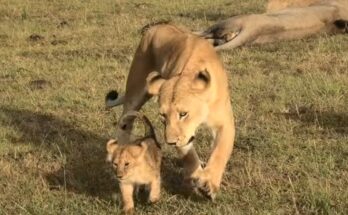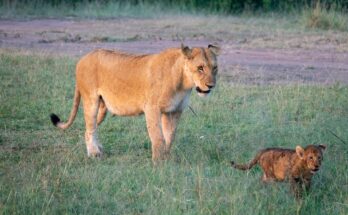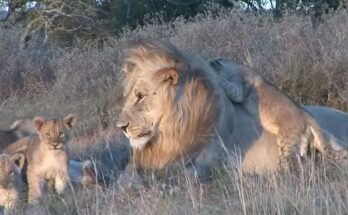
In the golden grasslands of the Masai Mara, Kenya, a heartwarming scene unfolds — a two-month-old African lion cub nestled close to its mother. Still small and unsteady on its paws, the cub is a symbol of new life in one of the world’s most iconic ecosystems. Its soft, spotted coat — which will fade as it grows — blends into the savannah, providing camouflage from predators while it remains under the watchful care of its mother.
At this age, the cub is highly dependent, rarely straying far from her side. Every movement is a learning moment — from playful pounces to clumsy attempts at stalking. These early months are crucial, as the cub begins to explore its environment and bond with other members of the pride, laying the foundation for the social skills that will define its life as an adult lion.
The mother, ever vigilant, keeps a close eye on her young. She is both protector and provider, nursing her cub and defending it from threats — including rival males, hyenas, and even other lions. Her strength and patience are vital in ensuring the cub survives in this competitive landscape.
The Masai Mara provides the ideal setting for this early chapter of life. Rich in prey and home to a diverse array of wildlife, it supports a healthy lion population, though challenges like habitat loss and human-wildlife conflict persist.
Watching this lion cub with its mother is a reminder of the delicate balance of life in the wild. It’s a moment of hope — a glimpse into the future of Africa’s lions, and a testament to the power of maternal care, the resilience of nature, and the importance of protecting these wild places for generations to come.


